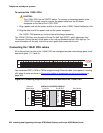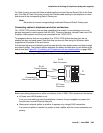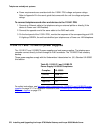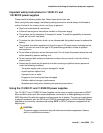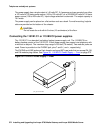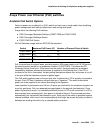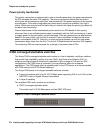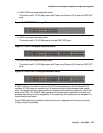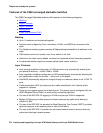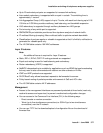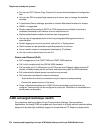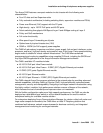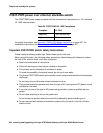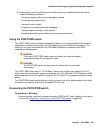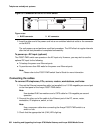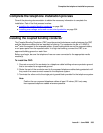
Telephones and adjunct systems
376 Installing and Upgrading the Avaya G700 Media Gateway and Avaya S8300 Media Server
Features of the C360 converged stackable switches
The C360 Converged Stackable switches offer features in the following categories:
● Stacking
● Layer 2 features
● Layer 3 features
● Management
● Power over Ethernet (PoE)
Stacking
● Up to 10 switches can be stacked together.
● Features such as Spanning Tree, redundancy, VLANs, and SMON are common to the
stack.
● The Octaplane stacking system provides 8 Gbps stacking bandwidth to all switches in the
stack.
● C360 stacks continue to function even if one switch or link fails.
● Switches in the stack can be added, removed, and replaced without disrupting operation.
● An advanced election algorithm ensures optimal stack master selection.
Layer 2 features
● Auto-sensing simplifies configuration of LAN connections by automatically selecting the
port speed for devices — either 10Mb or 100Mb.
● Auto-negotiation simplifies configuration of LAN connections by automatically selecting the
port transmission mode for devices — either half- or full-duplex.
● Auto-MDIX automatically adjusts for straight-through or crossover cables on all 10/100-TX
ports.
● Traffic prioritization (802.1p) allows real-time traffic classification into 8 priority levels
mapped to 4 queues.
● There are four egress queues on all switch ports. The queues can be configured with the
WRR (Weighted Round Robin) or strict priority scheduling algorithm.
● The use of the IEEE 802.1Q tagging for VLANs and per-port VLAN is supported.
● Multiple VLANs per port allow access to shared resources by stations that belong to
different VLANs.
● The use of the IEEE 802.1w standard for Rapid Spanning Tree Protocol (RSTP) provides
rapid convergence of the spanning tree in case of link failure.
● The use of the IEEE 802.1x standard for port-based network security ensures that only
authorized clients get network access.



